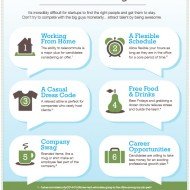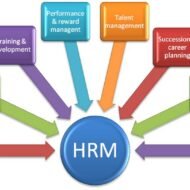Posted by Managementguru in Business Management, Human Resource, Labor Management, Motivation, Principles of Management
on Jun 10th, 2014 | 0 comments

The employees have to be compensated for what they do for an organization – hold on folks, besides the salary prerequisites, there are many other things which help in retaining them in the company and sustain their motivation. Monetary benefits alone do not satisfy employees. You have to think about other ways to pay back your employees through non cash benefits to make them feel they belong. Motivation is a big factor for consideration when it comes to retaining your employees. Direct Compensation Employees expect fair wages commensurate with their skills, experience and job content. Wages should be ascertained keeping in mind the cost of living in the particular locality. These should be revised periodically to account for inflation so that the real wages do not go down over the time. Wages must have a system of yearly increments, which should be flexible enough to reward good performance. Legal Perspective In India, the Minimum Wages Act, 1948 provides for fixation and enforcement of minimum wages in respect of scheduled employments. A tripartite Committee Viz., “The Committee on Fair Wage” was set up in 1948 to provide guidelines for wage structures in the country. Article 39 states that the State shall, in particular, direct its policy towards securing (a) that the citizen, men and women equally shall have the right to an adequate livelihood and (b) that there is equal pay for equal work for both men and women. Fringe Benefits These are also termed as indirect compensation that an organization provides to its employees which may include – insurance against accident, travel concessions, medical facilities, subsidized meals, uniforms, housing etc. The Finance Act, 2005 has introduced a new chapter VII-H, ‘Income-tax on Fringe Benefits’. The Chapter now brings to tax the fringe benefits collectively enjoyed by the employees and which cannot be attributed to individual employees. The Fringe Benefit Tax is to be borne by the Employer. Different methods of employee compensation! Promotion Employees expect to improve their position in the hierarchy over the time. This improvement in position is called promotion. 1. It immensely helps an employee to feel important and useful to the firm. 2. It enhances his/her status within and outside the organization. 3. Through promotion, he/she looks forward to accomplishing more challenging tasks, including participation in the decision making process. Payday Meme! Out of 440 million workers in India, 93% of the workers are in the unorganized sector. The contributions made by the unorganized sector to the national income, is very substantial as compared to that of the organized sector. It adds more than 60% to the national income while the contribution of the organized sector is almost half of that depending on the industry. In India, only about 8% of workers actually get the benefits available under various labor Acts. The rest 92% work in the unorganized sector, and either are not eligible for coverage. Types of Compensation! Job Security One main reason why people are reluctant to join small enterprises even at higher salaries is their ‘apprehension’ about ‘job security’. An enterprise that is able to dispel such apprehension benefits substantially in the long run. Working Conditions One primary cause of dissatisfaction of workers is ‘the quality of their working life’ which includes Reasonable hours of workA work placeTea breaksProvisions for a room for recreation, lunch etc.Availability of safety equipment and first aid facilities, andWater cooler, lavatory etc. These things may not improve productivity, but will help in preventing job dissatisfaction among workers. The management must also ensure that cordiality and friendliness is maintained between the workers. An environment should be created in which the superiors and senior employees and workers develop mutual...

Posted by Managementguru in Human Resource, Training & Development
on Feb 28th, 2014 | 0 comments

Definitions of Human Resource Management: 1. “A series of integrated decisions that govern employer-employee relations. Their quality contributes to the ability of organisations and employees to achieve their objectives.” (Milkovich & Boudreau, 1997). 2. “Concerned with the people dimension to management. Since every organisation comprises people, acquiring their services, developing their skills, motivating them to higher levels of performance and ensuring that they continue at the same level of commitment to the organisation are essential to achieving organisational goal. This is true, regardless of the type of organisation: viz. government, business, education, health, recreation, or social action.” (Decenzo & Robbins, 1989). 3.”The planning, organising directing and controlling of the procurement, development, compensation, integration, and maintenance of human resource to the end those individual, organisational, and social objectives are accomplished.” (Flippo, 1984). 4. “The organisation function that focuses on the effective management, direction, and utilisation of people; both the people who manage produce and market and sell the products and services of an organisation and those who support organisational activities. It deals with the human element in the organisation, people as individuals and groups, their recruitment, selection, assignment, motivation, empowerment, compensation, utilisation, services, training, development, promotion, termination and retirement.”(Tracey,1994 ) Knowledge Workers Human resource management is therefore understood as the all significant art and science of managing people in an organisation. Increasing research output in behavioral sciences, new trends in managing ‘knowledge workers’ and advances in training methodology and practices have led to substantial expansion of the scope of human resource management function in recent years. HRM is not just an arena of personnel administration anymore but rather a central and pervasive general management function involving specialised staff as assistants to main line managers. Managing employee relationships is the role of the Human Resource department Human Resource Management is a process of valuing and developing people at work, this includes: Recruitment and selection Employee communication and engagement (participation) to increase employee retention Training and development Leadership WHAT IS YOUR GREATEST WEAKNESS Labour turnover & staff retention Labour turnover refers to the proportion of a workforce that leave during a period of time (usually one year) Labour turnover = number of staff leaving during the period x 100 average number of staff Staff retention refers to the ability of a firm to keep its workers. The disadvantages of having a large proportion of staff leaving each year include: The cost of recruiting replacement workers The cost of training the new workers Loss of productivity whilst replacements are found Loss of experienced workers Negative impact on reputation WHAT IS YOUR GREATEST STRENGTH Methods to control turnover: 1. Financial methods of motivation Bonuses Profit share Fringe benefits 2. Non financial methods of motivation Employee engagement and empowerment Training and development Promotion opportunities 3. Improved Human Resource Management procedures Four Fundamental Principles of HRM: Human Resource is the organisation’s most important asset; Personnel policies should be directed towards achievement of ENTERPRISE goals and strategic plans; Corporate culture exerts a major influence on achievement of excellence and must therefore be strengthened with consideration of employee welfare. Whilst integration of corporate resources is an important aim of HRM, it must also be recognised that all organisations are ‘pluralist societies’ in which people have differing interests and concerns, which they defend and at the same time function collectively as a cohesive group. →Evolution of...




